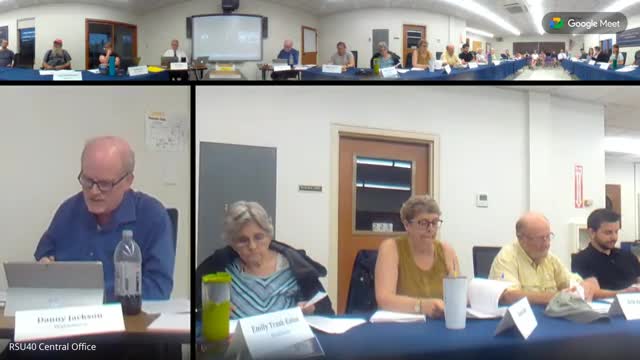Superintendent reveals alarming staffing crisis in schools
June 21, 2024 | RSU 40/MSAD 40, School Districts, Maine

This article was created by AI summarizing key points discussed. AI makes mistakes, so for full details and context, please refer to the video of the full meeting. Please report any errors so we can fix them. Report an error »

In a recent school board meeting, the superintendent provided a comprehensive report on staffing challenges and teacher pay disparities, highlighting significant trends that have emerged since the onset of the COVID-19 pandemic.
The meeting commenced with a brief acknowledgment of the school year’s conclusion, noting that while most students have finished classes, middle school students will have one more day. The superintendent expressed gratitude for attendance at the recent graduation ceremony and mentioned plans to attend the annual commissioner’s conference, promising to share insights at the next board meeting.
A key focus of the superintendent's report was the ongoing staffing difficulties faced by the district. This year, the district aimed to fill 124 positions, a stark increase from the 68 positions filled in the 2019-2020 school year, prior to the pandemic. The superintendent noted a troubling trend of increased transfer requests and retirements, both of which have doubled compared to previous years. As a result, the district ended the school year with 15 unfilled positions and currently has 34 vacancies, which is approximately half of the pre-COVID levels.
In addition to staffing issues, the superintendent addressed the growing pay gap for teachers compared to other professions requiring a bachelor's degree. A report indicated that teacher salaries have consistently lagged behind, with current earnings at about 75 cents on the dollar relative to other fields. The disparity varies by state, with some states experiencing a gap as low as 7% and others as high as 37%. Notably, neighboring states like Massachusetts and Connecticut have smaller pay gaps, potentially influencing local students' career choices in education.
The superintendent emphasized that while health benefits have historically mitigated some of the pay gap, they now account for only about 10% of the difference, leaving teachers increasingly challenged to make ends meet. The meeting concluded with an invitation for board members to ask questions, underscoring the urgency of addressing these critical issues in the education sector.
The meeting commenced with a brief acknowledgment of the school year’s conclusion, noting that while most students have finished classes, middle school students will have one more day. The superintendent expressed gratitude for attendance at the recent graduation ceremony and mentioned plans to attend the annual commissioner’s conference, promising to share insights at the next board meeting.
A key focus of the superintendent's report was the ongoing staffing difficulties faced by the district. This year, the district aimed to fill 124 positions, a stark increase from the 68 positions filled in the 2019-2020 school year, prior to the pandemic. The superintendent noted a troubling trend of increased transfer requests and retirements, both of which have doubled compared to previous years. As a result, the district ended the school year with 15 unfilled positions and currently has 34 vacancies, which is approximately half of the pre-COVID levels.
In addition to staffing issues, the superintendent addressed the growing pay gap for teachers compared to other professions requiring a bachelor's degree. A report indicated that teacher salaries have consistently lagged behind, with current earnings at about 75 cents on the dollar relative to other fields. The disparity varies by state, with some states experiencing a gap as low as 7% and others as high as 37%. Notably, neighboring states like Massachusetts and Connecticut have smaller pay gaps, potentially influencing local students' career choices in education.
The superintendent emphasized that while health benefits have historically mitigated some of the pay gap, they now account for only about 10% of the difference, leaving teachers increasingly challenged to make ends meet. The meeting concluded with an invitation for board members to ask questions, underscoring the urgency of addressing these critical issues in the education sector.
View full meeting
This article is based on a recent meeting—watch the full video and explore the complete transcript for deeper insights into the discussion.
View full meeting
